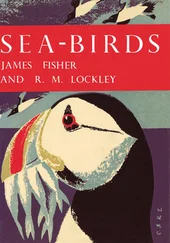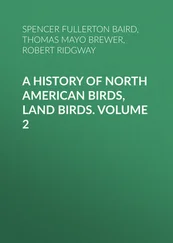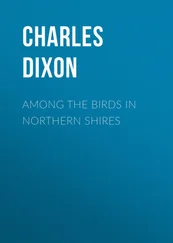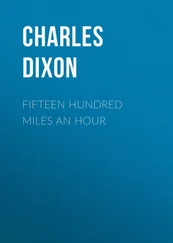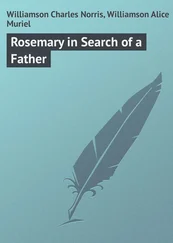Charles Dixon - British Sea Birds
Здесь есть возможность читать онлайн «Charles Dixon - British Sea Birds» — ознакомительный отрывок электронной книги совершенно бесплатно, а после прочтения отрывка купить полную версию. В некоторых случаях можно слушать аудио, скачать через торрент в формате fb2 и присутствует краткое содержание. Жанр: foreign_antique, foreign_prose, на английском языке. Описание произведения, (предисловие) а так же отзывы посетителей доступны на портале библиотеки ЛибКат.
- Название:British Sea Birds
- Автор:
- Жанр:
- Год:неизвестен
- ISBN:нет данных
- Рейтинг книги:3 / 5. Голосов: 1
-
Избранное:Добавить в избранное
- Отзывы:
-
Ваша оценка:
- 60
- 1
- 2
- 3
- 4
- 5
British Sea Birds: краткое содержание, описание и аннотация
Предлагаем к чтению аннотацию, описание, краткое содержание или предисловие (зависит от того, что написал сам автор книги «British Sea Birds»). Если вы не нашли необходимую информацию о книге — напишите в комментариях, мы постараемся отыскать её.
British Sea Birds — читать онлайн ознакомительный отрывок
Ниже представлен текст книги, разбитый по страницам. Система сохранения места последней прочитанной страницы, позволяет с удобством читать онлайн бесплатно книгу «British Sea Birds», без необходимости каждый раз заново искать на чём Вы остановились. Поставьте закладку, и сможете в любой момент перейти на страницу, на которой закончили чтение.
Интервал:
Закладка:
Owing to the great diversity of its haunts the Black-headed Gull is almost omnivorous in its diet. Inland it feeds on grubs – especially wire-worms – insects, worms, fresh-water fish, and newly sown grain, as I have often ascertained by dissection; on the sea coast it subsists on fish, crustaceans, and various odds and ends obtained about harbours or vessels. It seeks its food both whilst swimming about the water, fluttering above it, or when walking on the shore. This Gull is much more Tern-like in its habits than the larger species we have already dealt with. Of its services to the agriculturist there can be no question; it is just as useful on the land as the Rook, without that bird’s few little pilfering ways.
The Black-headed Gull is an inland breeding species, and resorts to marshes, wet moors, and meres, at varying distances from the sea. Sometimes these breeding-places are in fairly well-timbered districts, and often surrounded by trees and bushes. This Gull, too, is remarkably gregarious during the breeding season, and some of its colonies are very extensive, consisting of many thousands of pairs. The “gulleries” are visited for nesting purposes in March or April, and as the birds return to the same spots year after year, they probably pair for life. Nesting begins in April. Most of the nests are made upon the ground in rush tufts, in hassocks of coarse grass and sedge, amongst reeds in shallow water, on masses of the previous year’s decayed aquatic vegetation, or on the flat, spongy, moss-covered ground. Odd nests are occasionally made in the trees and bushes, or even on boat-houses. Many of the nests can only be described as mere rounded hollows in the cushions of grass or sedge; the more elaborate structures are usually in the wettest situations, and these latter are often added to as incubation advances, either to replace the wear and tear from the incessant wash of the water, or to provide a sufficiently large platform on which the young may rest. The nests are made of bits of reed and rush, coarse grass, flags, and scraps of moss, lined with finer materials of similar description. The eggs of this Gull are usually three in number, sometimes four. They are subject to much variation, ranging from rich brown to pale bluish-green in ground colour, spotted, blotched, blurred, and streaked with several shades of brown and gray. Large numbers of these eggs are gathered for culinary purposes, the crop being systematically taken, and the birds always allowed eventually to sit upon their final clutch. Many of these eggs are passed off for those of the Peewit by unscrupulous dealers, notably in Leadenhall market. Few scenes in the bird world are prettier than a colony of Black-headed Gulls. When disturbed at their nests the birds rise in fluttering crowds, drifting noisily to and fro, anxious for the safety of their eggs or helpless young. As is the invariable rule with birds that continue to replace their taken eggs, but one brood is reared in the season.
These birds may be readily distinguished, even when on the wing, by the cuneiform or wedge-shaped tail, and by the dark upper plumage. The bill is also much stouter and hooked at the point, whilst the claws are sharp and curved. Skuas are only exceptionally seen by the ordinary visitor to the sea-side. In the first place, they only breed in our islands in the extreme north or west of Scotland, and in the second place they are decidedly oceanic in their habits, after the nesting season is passed. Occasionally Skuas may be seen on migration, especially in autumn, and along our eastern and southern seaboard; occasionally they are driven shorewards by protracted stormy weather, and under these circumstances have frequently been known to visit inland localities. Odd birds are generally seen, perhaps a party of half a dozen, but on very exceptional occasions large flocks make their appearance – witness the thousands of Pomarine Skuas that visited the coast of Yorkshire during the autumns of the years 1879 and 1880.
The Skuas are birds of remarkably powerful flight, displaying marvellous command over themselves in the air, turning and twisting with great speed. These birds are the Raptors of the sea; a terror to the Gulls and Terns; merciless robbers of the hard-won spoil of more weakly species; destroyers even of the eggs and helpless young of other sea birds. All the four species of northern Skuas are visitors to the British Seas, but only two of them are indigenous to our islands. The first of these to be noticed here is the Great Skua, Stercorarius catarrhactes , one of the most local of British birds during the breeding season, as its only known nesting places in our area are on Unst and Foula, two small islands of the Shetland Group. Except during the breeding season, the Great Skua is mostly oceanic in its habitat, wandering long distances from land in quest of prey, attending vessels and fishing fleets, only drawing landwards by stress of weather or unusual abundance of food. This Skua is practically omnivorous. During its summer sojourn near and on the land it repeatedly raids the colonies of other sea fowl, to prey upon exposed eggs or unguarded young; it captures the smaller Gulls, notably the Kittiwake: it also picks up any stranded fish or other carrion; and is constantly on the watch to chase any Gull or Tern that catches a fish, following the poor bird with fatal persistency until, terror stricken, it disgorges its food, which is promptly seized by the voracious Skua. The call note of this Skua is very similar to that of the Lesser Black-backed Gull, but when under the excitement of chasing other birds, or of seeking to guard its own domain, the bird utters a loud cry which is likened by many observers to the word skua or skui .
The Great Skua resorts to its breeding grounds in April, and the eggs are laid in May. As it returns yearly to the same places, it very possibly pairs for life. The nests are made upon the ground of the high moorlands, amongst the heath and grass, and are mere hollows in the moss, sometimes lined with a little dry grass. The eggs of this Skua are two in number, and vary from pale buff to dark olive-brown in ground colour, sparingly spotted and speckled with dark brown and grayish-brown. These eggs are large in size, and very closely resemble those of the Herring Gull. But one brood is reared in the year, and by the end of August the young birds and their parents desert the nesting colony, and adopt their pelagic habits. Few birds are so courageous in defence of their nests as the Skua. Even such predaceous creatures as Eagles, Ravens, and dogs are driven off; whilst human intruders are screamed at and approached within a few feet, the birds wrathfully extending their legs as if they would strike, and skimming to and fro in rage. Many tales of this bird’s daring at its nesting places are current in Shetland, where it is known almost universally as the “Bonxie.”
Our second species is Richardson’s Skua, the Stercorarius richardsoni of some systematists, the S. crepidatus of others. Although not quite so local as the preceding species, its breeding area is remarkably restricted, so far as the British Islands are concerned. It breeds on the Hebrides, in Caithness and Sutherlandshire, and on the Orkneys and Shetlands. Richardson’s Skua is a more gregarious species than its larger relative, but its habits generally are much the same. It is, for its size, equally daring and rapacious; is also remarkable for its powers of flight; but differs from the Great Skua in being more gregarious. Richardson’s Skua is for the most part a summer migrant to the British Islands, and numbers of birds pass along our coasts in spring to their northern breeding-grounds. It is only during the seasons of passage that the visitor to our southern coasts may hope to fall in with this bird, and even then it does not approach the land much. Like the other Skuas, the present species is a relentless robber of the Gulls and Terns, chasing them up and down until they disgorge their fish, and repeating the process at every opportunity. Eggs, young birds, and carrion, are also eaten. It is said to capture weakly birds, but I do not think it is so much addicted to this Hawk-like habit as the preceding species. During summer insects and ground fruits are eaten, whilst it has been known to take worms and molluscs. The note of this Skua is described either as a plaintive mee or kyow , and when in chase of a bird it has been likened to the syllable yah , oft repeated.
Читать дальшеИнтервал:
Закладка:
Похожие книги на «British Sea Birds»
Представляем Вашему вниманию похожие книги на «British Sea Birds» списком для выбора. Мы отобрали схожую по названию и смыслу литературу в надежде предоставить читателям больше вариантов отыскать новые, интересные, ещё непрочитанные произведения.
Обсуждение, отзывы о книге «British Sea Birds» и просто собственные мнения читателей. Оставьте ваши комментарии, напишите, что Вы думаете о произведении, его смысле или главных героях. Укажите что конкретно понравилось, а что нет, и почему Вы так считаете.



